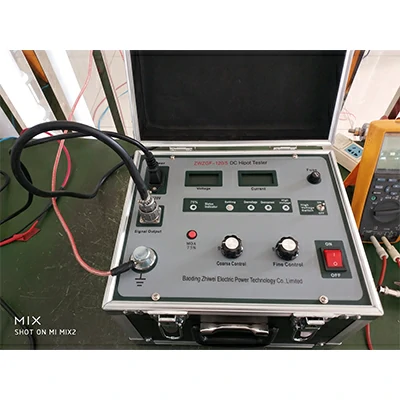In the realm of electrical equipment validation, high potential (hipot) testing stands as a vital safeguard against insulation failures. This crucial step ensures that motors, transformers, switchgear, and an array of other electrical devices are insulated effectively before being commissioned. While both AC DC hipot testers serve the purpose of assessing dielectric strength, their unique attributes cater to varying application scenarios.

AC Hipot Testers: Emulating Real-World Conditions
AC hipot testers, rooted in tradition, apply alternating current in a sinusoidal wave pattern, gradually escalating voltage. With 60 to 120 polarity reversals per second, insulation is subjected to a dynamic electric field. This method excels at uncovering subtle impurities or flaws in insulation that might elude DC testing, thanks to its ability to induce charging currents within materials.
AC testing is particularly valuable during pre-production stages for scrutinizing new components, identifying manufacturing defects before final assembly. Its fluctuating electric field mirrors operational environments encountered in AC power systems, enhancing the relevancy of test results. Nonetheless, the same alternating currents that make AC testing insightful can inadvertently worsen existing insulation problems like corona discharge, potentially hastening degradation over time.
DC Hipot Testers: Ensuring Safety and Precision
Contrarily, DC hipot testers administer a steady direct current, subjecting insulation to a constant electric load. This approach promotes the gradual emergence of defects such as treeing cracks, minimizing the risk of immediate insulation failure during testing. It is especially suited for live equipment inspection, where preserving the integrity of the insulation is paramount.
DC tester testing eliminates polarization effects, thereby heightening measurement accuracy by negating the influence of charging currents on readings. Although it does not mimic the alternating fields of real-life AC systems, DC excels in detecting gas or liquid contamination in insulation without amplifying underlying issues. This makes it the preferred choice for commissioning tests on rotating machinery, cables, and wiring, extending equipment lifespan through regular, non-destructive inspections.
A Comparative Overview of Features
The advent of modern universal hipot testers, exemplified by models from Megger, has blurred the lines between AC and DC testing. These sophisticated instruments offer dual capabilities of 50/60Hz AC and pure DC voltage outputs, adjustable voltage ramp rates, and precise timing controls. Integrated data logging and pass/fail analysis simplify documentation and streamline workflow.
While AC modes may allow for higher voltage testing, DC is often adequate for industrial and utility applications up to 5kV, providing ample safety margins. Portable DC units powered by batteries further augment safety in outdoor or remote testing sites. User-friendly touchscreen interfaces supplant outdated mechanical controls, enhancing ease of operation. Additionally, built-in ground bond testing reinforces safety protocols.
Conclusion: Choosing Wisely for Optimal Asset Protection
Ultimately, the decision to employ AC or DC hipot testing is dictated by the specific application context and the objectives of the testing program. For post-production, commissioning, and ongoing maintenance of live electrical equipment, DC testing emerges as the safer alternative, mitigating the risk of exacerbating insulation vulnerabilities while ensuring reliable defect detection. Universal hipot testers, with their flexible AC/DC output, represent the pinnacle of versatility, catering to a wide array of assets and reinforcing the cornerstone of any comprehensive reliability and protection strategy.
